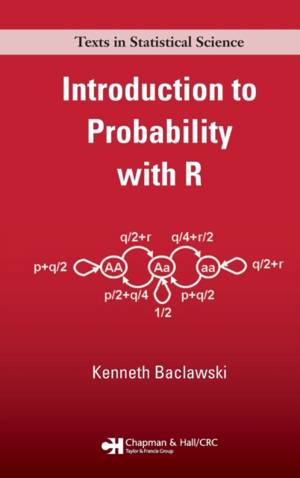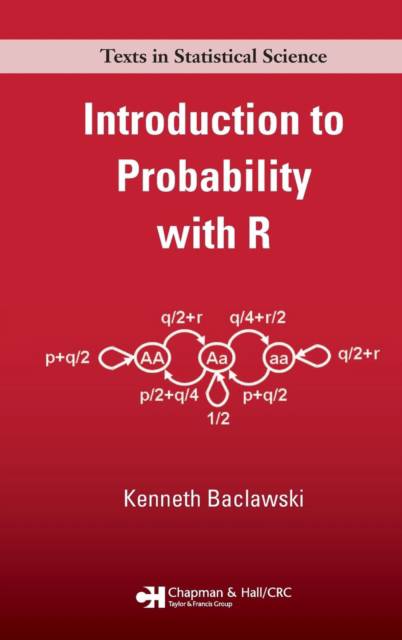
- Retrait gratuit dans votre magasin Club
- 7.000.000 titres dans notre catalogue
- Payer en toute sécurité
- Toujours un magasin près de chez vous
- Retrait gratuit dans votre magasin Club
- 7.000.000 titres dans notre catalogue
- Payer en toute sécurité
- Toujours un magasin près de chez vous
Description
Based on a popular course taught by the late Gian-Carlo Rota of MIT, with many new topics covered as well, Introduction to Probability with R presents R programs and animations to provide an intuitive yet rigorous understanding of how to model natural phenomena from a probabilistic point of view. Although the R programs are small in length, they are just as sophisticated and powerful as longer programs in other languages. This brevity makes it easy for students to become proficient in R.
This calculus-based introduction organizes the material around key themes. One of the most important themes centers on viewing probability as a way to look at the world, helping students think and reason probabilistically. The text also shows how to combine and link stochastic processes to form more complex processes that are better models of natural phenomena. In addition, it presents a unified treatment of transforms, such as Laplace, Fourier, and z; the foundations of fundamental stochastic processes using entropy and information; and an introduction to Markov chains from various viewpoints. Each chapter includes a short biographical note about a contributor to probability theory, exercises, and selected answers.
The book has an accompanying website with more information.
Spécifications
Parties prenantes
- Auteur(s) :
- Editeur:
Contenu
- Nombre de pages :
- 380
- Langue:
- Anglais
- Collection :
Caractéristiques
- EAN:
- 9781420065213
- Date de parution :
- 24-01-08
- Format:
- Livre relié
- Format numérique:
- Genaaid
- Dimensions :
- 164 mm x 236 mm
- Poids :
- 671 g







